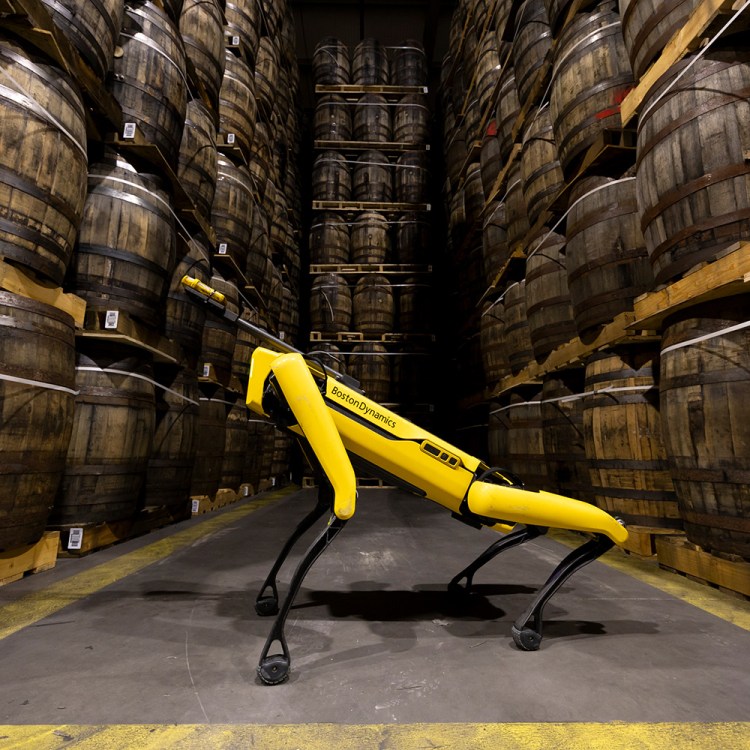Thomas Peterson may have majored in marine biology, but he ended up working in insurance. It has done well for him. “It’s insurance that’s funded all the fun for all these years,” he says. The fun, in this case, is yachting.
Peterson’s wife was his one-time yacht broker. After he’d bought his sixth vessel from her, she quipped that it would be easier if they just married. But, he says, like any yacht owner — his current pleasure craft is the 75-foot motor yacht Valkyrie — “I tend to have an interest in the protection of the ocean.” It’s why he’s been keen to use Valkyrie to launch “drifters,” buoy-like scientific instruments, off the Channel Islands of California, and host researchers who are studying great white shark juveniles or trying to tag whales.
He does all this through the International SeaKeepers Society, a Florida-based organization established 27 years ago. The group tries to matchmake the owners or captains of vessels — anything from tenders to tugs, catamarans to schooners to superyachts — with anyone engaged in marine research.
The reason is simple. “There are so very few dedicated research vessels around available to scientists, and even when they get access, their time on board is extremely limited — they’re effectively in competition with other laboratories,” explains Tony Gilbert, SeaKeepers’ chief programs officer. “Private yachts make research that was once inaccessible or too cost-prohibitive possible.”
Gilbert means “inaccessible” quite literally. One of the huge benefits of private yachts is that they can enter coastal waters — under national jurisdiction — in ways official research vessels cannot, at least not to do scientific research and at least not without typically having fought through a bureaucratic quagmire of red tape to get the necessary permits.
Of course, not every yacht owner is into the idea of hosting a team of 10 or so scientists for a few days and ferrying them from dive spot to dive spot. Some expect to be paid by SeaKeepers (they’re not) or figure there must be some tax break in it (there isn’t). Some, says Gilbert — who spends a lot of time at the major international boat shows smooth-talking captains and owners — find managing a sizable vessel for their own use logistically challenging enough already.
But for others, he says, and there are some 200 vessels globally currently on their books, “It’s a chance to give back. It’s a chance to do something different to sitting around sunbathing on deck. They want to help a good cause. And if you’re ready to spend so much money even just to maintain your vessel, you probably have a vested interest in preserving what you love: the sea, its amazing biodiversity. They get that.”

How to Pitch a Yacht Owner
Connecting yacht owners with scientists is an idea that’s spreading. In 2019, Yachts for Science was established in the U.K., funded by the Ocean Family Foundation, to do much the same as SeaKeepers. Its project lead, Rosie O’Donnell, says that for many owners, helping science adds an extra, interesting dimension to their leisure. Increasingly, these boaters want to be on board with their scientist guests too, even bringing their kids along for this rare educational opportunity.
“There’s also a recognition that it’s a no-brainer to put their vessel to good use when it’s otherwise just sat on the water waiting for them to turn up, in the right location, with captain and crew already paid for,” O’Donnell says.
Damian Bird is currently the captain of Ammonite, a 77-foot motor yacht owned by a man in South Carolina and operating out of the Bahamas. Bird has recently taken researchers on multiple dives to collect samples in a bid to better understand stony coral tissue loss disease, now a major threat to reefs across the Caribbean — and with each of his postings he has persuaded the various owners to get on board with helping science, if only by installing a device on their vessel’s depth sounder that will help better map the ocean floor.
“Yachting is obviously a luxury and sometimes wasteful industry — there’s a lot of fuel burnt, a lot of food wasted. And a yacht clearly isn’t a necessary item, of course,” Bird says. “It’s rare to meet an owner who isn’t aware of that public image, and that consequently it’s good to be part of something bigger than that. The idea of helping our understanding and protection of the ocean speaks for itself.”
Bottled-Up Bottlenoses: The Ugly Truth Behind Our Love of Dolphins
Dolphins are the smiling ambassadors of the sea, but a growing chorus of scientists, trainers and advocates say it’s time to end their captivityThe understanding that could come is diverse, too. Gilbert speaks of what he calls the “sexy” research — sharks, whales and coral reefs — but that much more mundane research, like taking water samples at various depths in various locations, is just as important. It’s for that reason that, while SeaKeepers and Yachts for Science have engaged 200-foot superyachts in their missions, these are not always the most useful. What’s ideal, says Gilbert, are vessels that are more nimble, that can be moved around without costing too much.
On the other hand, he laughs, researchers don’t tend to moan when given such luxurious accommodations as a research base.

What’s Better Than Donating Time? Try a Whole Boat.
The concept of those with big money and a love of the sea giving back through science has another level entirely. The Pink Flamingo Society is an informal international organization that launched five years ago and works with the ultra rich in helping them understand that if they really want to assist marine research, they should give their vessel over to it entirely. Even better? They could commission an entire vessel fit for research from scratch, complete with A-frame winches, long-range tenders, on-board labs and the like. So far, their efforts have resulted in seven such vessels being built — already working with 30 labs across 15 countries — with others in the pipeline, albeit some years away given shipyard schedules.
“This is about convincing [those with the means] to not build a floating hotel to sit in Monaco harbor, because in truth a superyacht is not the best for frontier science,” says Romain Troublé, co-chair of the society and also COO of the French NGO Tara Ocean Foundation, which operates its own research vessel through philanthropic funding. “It’s not so much ‘superyachts for science’ so much as the super-rich building a yacht for science. And that can be a real game-changer for the ocean’s sake.”
He likens this initiative to the many private individuals now investing in space — “which has changed the pace of advancement, and helped make it way cheaper too” — but for the seas. “These people understand why it’s necessary to [help research of the ocean],” he adds, “because invariably they’re already passionate about the ocean. They recognize that there’s plenty to explore in the seas [without going into space].”
Last year, the Pink Flamingo Society held its first conference. “We’re starting to get out of our pond to show people what we do, and to push for more private funding of our initiatives,” Troublé explains. But it seems like word is already spreading. According to Maria Amorso, of Cantiere delle Marche, demand for what they do is on the up and up — the Italian shipbuilder, established in 2010, is the world’s only such company specializing in designing and building what are classed as “explorer” yachts. These come with huge storage areas, vast range, ice-strengthened hulls and shallow drafts that allow them to navigate river systems.
The very first such vessel was said to have been commissioned back in the 1960s by Gianni Agnelli, style supremo and heir to the Fiat car-manufacturing company, though the idea of these yachts soon fell out of fashion in favor of full-on luxury.
“Now it seems some owners want to be able to take their vessel anywhere again, to stay at sea for a long time. They’re after something very capable,” says Amorso; one owner uses his ship-launched submarine to document pollution of the Mediterranean’s seabed. “And, of course, these are ideal vessels for scientific research.”
It says something that if you put your order in with Cantiere delle Marche now, you can expect delivery by the end of the decade.
This article appeared in an InsideHook newsletter. Sign up for free to get more on travel, wellness, style, drinking, and culture.

























